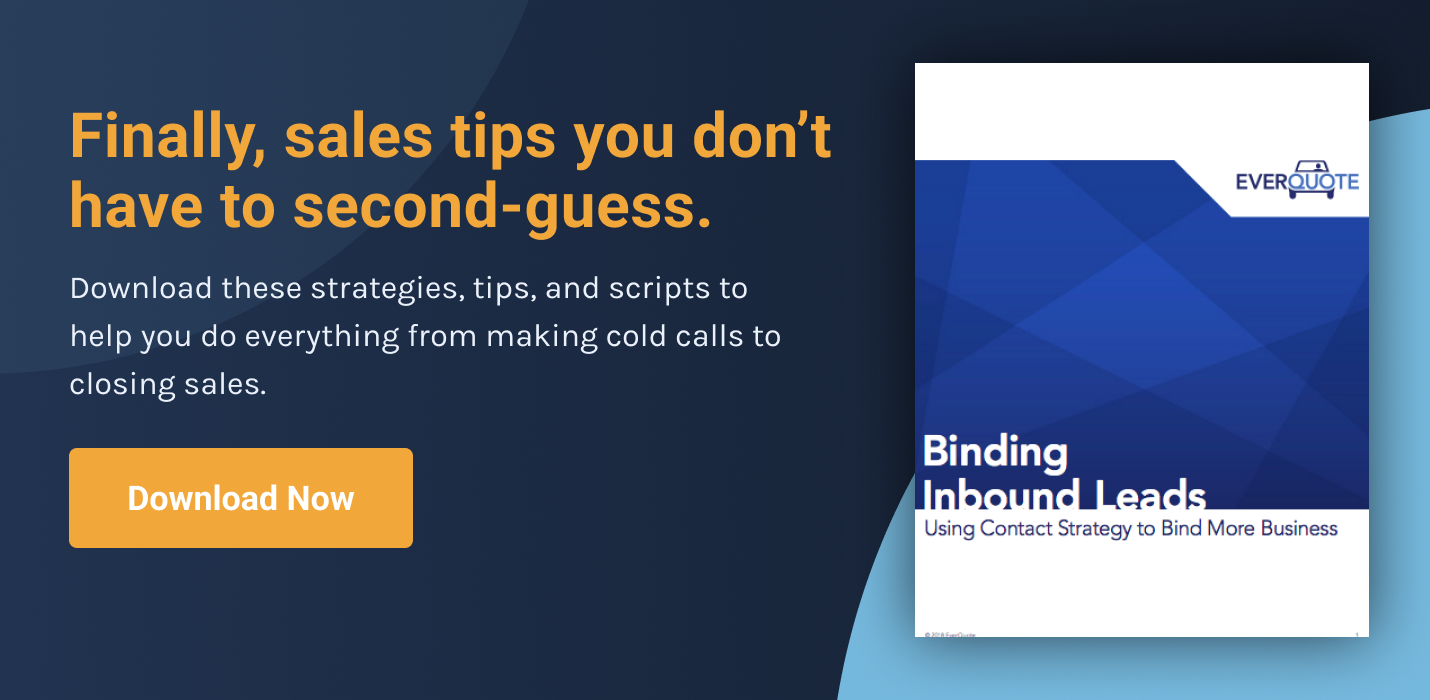- Home»
- EverQuote Pro Blog»
- 3 Must-Haves For Insurance Agency Websites
3 Must-Haves For Insurance Agency Websites

These days, with more consumers than ever shopping online for insurance, insurance agency websites are not optional—they are absolutely necessary for agents who want a chance at doing business with customers actively searching for coverage. JD Power’s recent survey found that 74 percent of customers prefer searching for information about insurance online. (Tweet this!) If you can’t easily be found where customers are searching, or fail to make an impression, you are surrendering the best leads to agents whose insurance agency websites are designed to convert searchers into leads and buyers.
The minimum requirements for an insurance agency website include contact information and a product list. This basic information will allow your agency to be found online, but it also tells potential customers little about you or your business and does nothing to distinguish you from your competitors.
Want to bind more policies? Check out The Insurance Lead Generation Strategy Playbook.
The best insurance agency websites go far beyond the minimum, using a variety of features to attract and hold customers’ attention. The good news is that it’s relatively easy—and inexpensive—to put together a website that will set your agency apart from your competitors. Here are some things to keep in mind:
1. Personalize your insurance agency website.
If you do a quick search of agency websites, you’ll see the majority of them are built on carrier templates and offer minimal information. Here’s how to go the extra mile for your agency’s website:
- Include a personal bio and business photo. The insurance business is based on relationships; your bio allows customers to get to know you before they contact you. Use your bio to tell customers about who you are as an agent, your interests, your ties to the community, and any community service activities you perform.
- If you have additional agents, include bios and photos for each of them.
- Integrate your website with your social media accounts such as Facebook, Twitter, and LinkedIn. These can be used for sharing information that may not fit your carrier’s website template—and to increase engagement with customers and potential customers.
- Add video to your site. Video is more engaging than text and better at capturing and holding attention. Brief videos introducing yourself and your team members and video testimonials from existing customers will help new and potential customers get to know you.
2. Make sure your website is functional.
Even the most attractive and informative websites aren’t seen by customers if they don’t function properly. Be sure to address these issues:
- Check for slow loading. Attention spans are limited, and if your site loads slowly, customers are likely to move on to the next site.
- Verify that your site is mobile-friendly. Responsive websites are built to display properly on any device a customer may use for searching. Your website needs to load quickly and look good whether customers are searching on a smartphone, a tablet, or a desktop computer.
- Keep the site design simple. A simple layout is easier for customers to navigate.
- Include several “calls to action” with at least two of the following contact options: click to call, click for quote, live chat, and contact forms. These allow customers to communicate in the way that is most comfortable and convenient for them, and increase your chance of capturing leads.
3. Offer useful, relevant information to your site’s visitors.
One sure way to capture customers’ attention is to provide them with answers to the questions they may have. Many of the best insurance agency websites provide information of value to customers through a regularly updated blog featuring in-depth and unique content the visitor will find worthwhile. You can use a blog for multiple purposes:
- To share news or curated content directly or tangentially related to insurance.
- To educate customers about the factors that impact insurance rates and increases.
- To preempt objections from the consumer.
- To build credibility with customers.
- You can also share information from insurance (and related) industry experts on your blog, either with guest blog posts or video interviews.
Regardless of the type of information you share on your blog, you need to post updates frequently. Blogs are only useful if they share relevant, up-to-date information, and a blog that was last updated several years ago communicates neglect—the opposite of the good impression you’re trying to create.
In Conclusion
If you are an exclusive agent, before including any of these features on your website, verify that additions to your site are compliant with your carrier’s guidelines. Beyond that, your site’s potential is limited only by the amount of effort you can give to it. Using some or all of these tips, you can help transform your site from a business card to an engine for generating leads.
If you’re looking for even more leads, contact us at EverQuote. We provide originally-sourced, qualified leads to help you bind more business. With a world-class website and quality leads from EverQuote, you’ll be well on your way to achieving your growth goals!
Unlock predictable growth with EverQuote.
Our representatives are standing by to help you succeed.
Call 844-707-8800
Weekdays, 9AM-5PM (ET)
Call 844-707-8800
Weekdays, 9AM-5PM (ET)
Accelerate your growth.
Complete the form below or just call 844-707-8800 to learn how we can help you achieve your goals.
By clicking "Get Started", I consent by electronic signature to being contacted by EverQuote, including by automatic telephone dialing and/or an artificial or prerecorded voice (including SMS and MMS - charges may apply), regarding EverQuote for Agents, even if my phone number is listed on a Do Not Call Registry. I also understand that my agreement to be contacted is not a condition of purchasing any goods or services, and that I may call (844) 707-8800 to speak with someone about EverQuote for Agents.
By clicking "Get Started", I affirm that I have read and agree to this website’s Privacy Policy and Terms of Use, including the arbitration provision and the E-SIGN Consent.
* Mandatory fields
 Product Overview
Product Overview Blog
Blog FAQs
FAQs Webinars
Webinars eBooks & Resources
eBooks & Resources